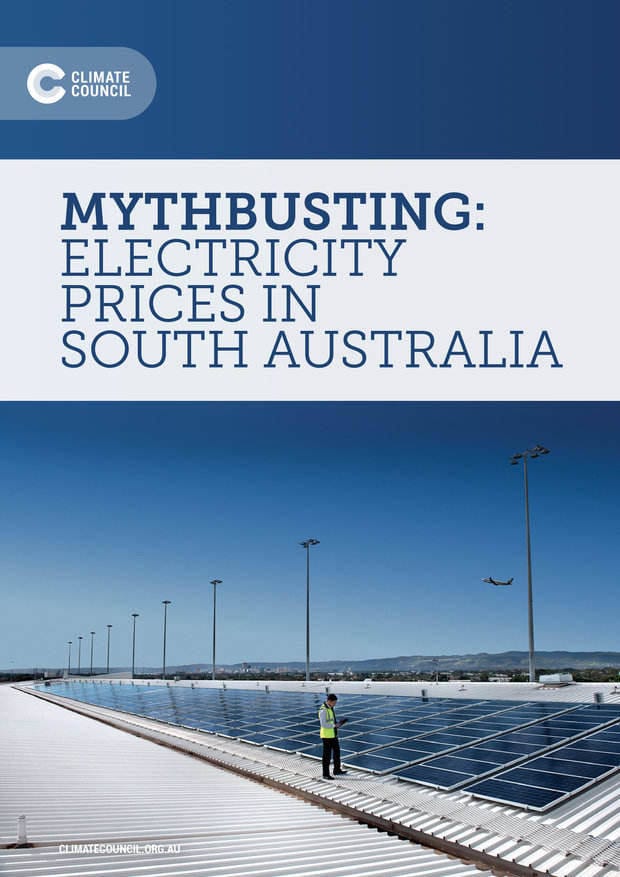In recent months, there have been a number of inaccurate media stories linking high electricity prices in South Australia with the state’s high proportion of wind and solar generation.
However, our new report reveals that electricity price spikes in South Australia have reduced as renewable energy grows.
Key Findings
1. South Australia is a global leader in renewable energy and is much further ahead than the other states in reducing emissions to tackle climate change.
- The state is on track to reach its target of 50% renewable electricity by 2030.
- The state’s transition away from fossil fuels, particularly coal, is consistent with action needed to avoid catastrophic climate change and ensure the survival of the Great Barrier Reef.
2. Recent short-term increases in South Australia’s wholesale power prices have been driven primarily by a reliance on expensive gas for power and a lack of competition amongst power generators.
- Average electricity prices have been historically higher in South Australia due to the state’s more expensive fossil fuel options and lower electricity market competition.
- Recent events, including very cold weather, work on the interconnector that restricted supply from Victoria and gas prices at almost four times the usual level, put the two main electricity generators in South Australia in an extraordinarily powerful position to increase prices.
- Without South Australia’s high level of renewables, the state’s reliance on expensive gas would be even greater. ›› Queensland (with less than 5% renewable electricity) has until recently experienced similarly high prices to South Australia (with more than 40% renewable electricity).
- In the past year in particular, all eastern states have experienced similar short-term price patterns over many months, even though New South Wales, Victoria and Queensland generation is overwhelmingly coal based. This is further evidence that the cause of price rises is due to a range of industry factors rather than renewable energy.
3. Renewable energy has dramatically reduced electricity price spikes in South Australia.
- Electricity price spikes (periods where prices exceeded $5,000/MWh) have fallen significantly across the National Electricity Market as the proportion of renewable energy has increased but especially in South Australia.
- For comparison, in 2008, South Australia experienced more than 50 price peaks compared to one price peak in 2015.
4. The key to reducing electricity prices in South Australia is reducing the state’s reliance on expensive gas through increased competition and a smarter, more connected electricity grid.
- Improved competition in the electricity market could be achieved by reducing the time intervals set for spot price (wholesale electricity price for a given time period) settlements from half-hour blocks to five-minute blocks.
- Developing alternative reserve capacity such as large-scale and distributed energy storage would reduce exposure to short-term price exploitation when wind and solar supply are low.
- Increased interconnection with the eastern states would expand supply options and increase competition with South Australian gas fuelled power plants.
- AEMO and ElectraNet (2016) have been jointly working together to plan for and accommodate and manage higher levels of wind and solar PV in South Australia.

Andrew Stock is lead researcher for the Climate Council.










